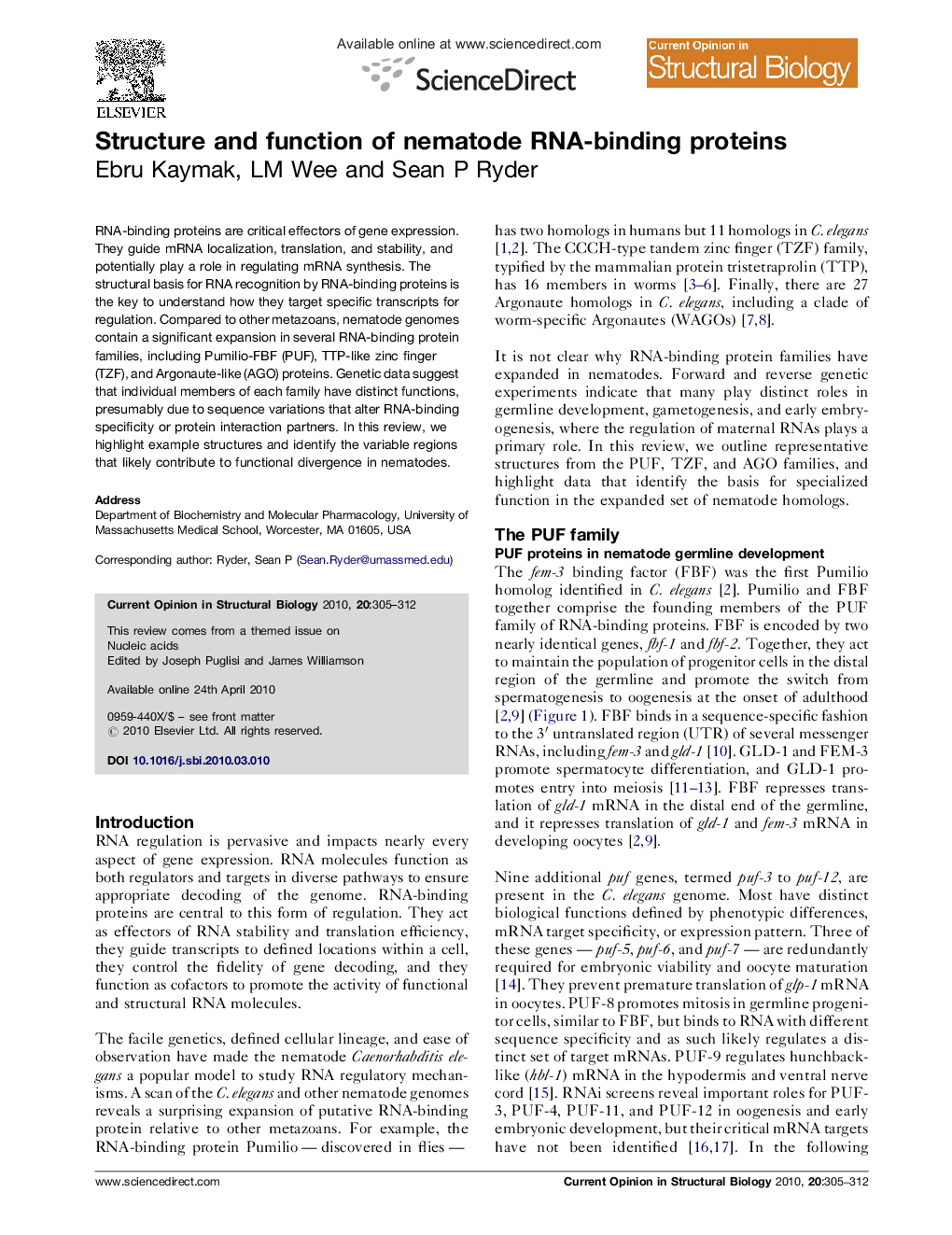| Article ID | Journal | Published Year | Pages | File Type |
|---|---|---|---|---|
| 1979688 | Current Opinion in Structural Biology | 2010 | 8 Pages |
RNA-binding proteins are critical effectors of gene expression. They guide mRNA localization, translation, and stability, and potentially play a role in regulating mRNA synthesis. The structural basis for RNA recognition by RNA-binding proteins is the key to understand how they target specific transcripts for regulation. Compared to other metazoans, nematode genomes contain a significant expansion in several RNA-binding protein families, including Pumilio-FBF (PUF), TTP-like zinc finger (TZF), and Argonaute-like (AGO) proteins. Genetic data suggest that individual members of each family have distinct functions, presumably due to sequence variations that alter RNA-binding specificity or protein interaction partners. In this review, we highlight example structures and identify the variable regions that likely contribute to functional divergence in nematodes.
